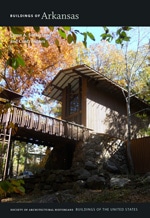The neighborhood southwest of downtown has been predominantly African American since settlement began following the Civil War, as segregated development excluded them from many of the city’s other neighborhoods. By the end of the 1950s virtually all of the houses in the area were occupied by African Americans. These street blocks of the neighborhood represent its residential character. Although many small shotgun houses existed in the southwest until the 1950s when urban renewal projects wiped them out, a few survive, including a handful on these streets. These streets are primarily characterized by one- and two-story Craftsman and Colonial Revival houses. Among the influential African Americans who lived in this area were attorney Scipio Jones, who resided in a 1928 Craftsman style house at 1872 Cross Street. Some of the city’s most architecturally and historically significant African American institutions are located in the southwest, including Dunbar Magnet Middle School (PU42); Philander Smith College (900 W. Daisy L. Gatson Bates Drive), a Methodist institution founded for African American students in 1877 as Walden College and renamed in 1883; and Mount Zion Baptist Church (PU33).
You are here
Houses in the Dunbar Neighborhood
Mid-19th century—present. Roughly bounded by Wright Ave., S. Chester, W. 24th, and S. Cross sts.
If SAH Archipedia has been useful to you, please consider supporting it.
SAH Archipedia tells the story of the United States through its buildings, landscapes, and cities. This freely available resource empowers the public with authoritative knowledge that deepens their understanding and appreciation of the built environment. But the Society of Architectural Historians, which created SAH Archipedia with University of Virginia Press, needs your support to maintain the high-caliber research, writing, photography, cartography, editing, design, and programming that make SAH Archipedia a trusted online resource available to all who value the history of place, heritage tourism, and learning.















